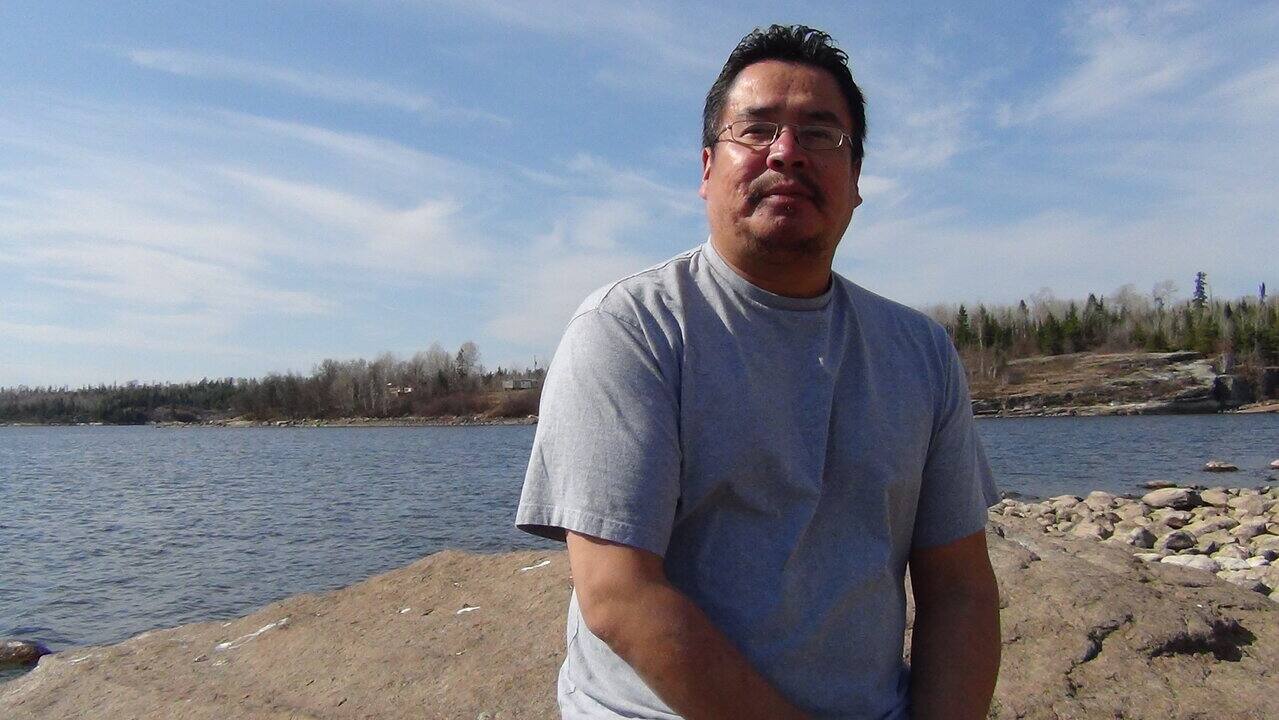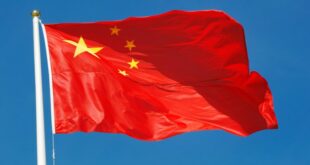Illegal gold mining in the Amazon has intensified, with one expert calling it a ‘transnational crime.’

The rising value of gold worldwide has amplified illegal mining in the Amazon, where liquid mercury is being dumped in the Amazon River and causing scientists to warn that Indigenous communities and the environment could pay a far greater price.
Three weeks ago, Colombia, Brazil and the United States partnered up to destroy 19 illegal gold mining dredges in the Amazon Rainforest. According to Reuters, the dredges were producing about $1.9 million Cdn in gold.
The dredges scoop mud from riverbeds and miners mix in liquid mercury, which causes gold particles to stick together, making them easier to find. Authorities involved in the operation said it targeted the Familia del Norte criminal group, which they said was dumping 114,000 grams of mercury into the water every month while mining gold.

The partnership between countries to destroy the dredges is the first of its kind in the area — but it’s only made a dent in the overall problem. Considering these mining methods are cheap and extremely profitable, experts suggest the cost of one dredge can be made up within a week.
In the wake of the COVID-19 pandemic, illegal mining has intensified, and the resulting mercury pollution has devastating and long-lasting impacts on the health and culture of communities that depend on the Amazon River.
Mercury poisoning has long been associated with adverse effects on the nervous system, and new studies show it may pose a risk to cardiovascular and immune systems, too, according to Niladri Basu, a professor at McGill University who holds a Canada Research Chair in Environmental Health Sciences.
He noted in an email to CBC News that those health effects can mean a “diminished quality of life in affected individuals, families and communities.”

Why Costco is now selling gold
Gold has long been seen as a stable investment, and at a time of global uncertainty, it’s becoming so popular that big box stores such as Costco have jumped on the bandwagon.
‘Explosion in gold mining’
Many South American countries saw a huge increase in illegal gold mining during the pandemic.
The involvement of organized crime in the mining process mean the areas became more violent, so guards in protected national parks were unable to report to their posts, resulting in a lack of government surveillance.
“During the past two years, there’s been an explosion in gold mining and the use of mercury and cyanide in gold mining in the Ecuadorian Amazon,” said biologist Jenna Webb, a member of CoPEH-Canada, a community of researchers interested in global ecosystems and health.

She’s been living in the Ecuadorian Amazon for the last seven years and says it now looks “a little bit like Madre de Dios in 2008.”
That protected area of once pristine rainforest in southern Peru is now referred to as a “wasteland” thanks to what government officials estimated to be around 40,000 illegal miners.
According to Webb, one gram of mercury — about the amount in an old-fashioned thermometer — is enough to contaminate an eight hectare lake. “So that’s one relatively small lake, but still … a whole lake — that’s just one gram.”
She says the amounts of mercury dumped into the water by mining operations are “orders of magnitude larger than that.”

Once it’s in the water, Webb says bacteria transform the mercury into methylmercury, a neurotoxin. Fish eat plants where the bacteria live and the neurotoxin builds up in their bodies — a process called bioaccumulation. That buildup is passed along to humans if they eat contaminated fish.
Methylmercury can be passed from mother to child and can also slip through the barrier that usually protects the brain from toxins.
This is why Webb and other experts suggest people take care when consuming fish. “We say, ‘Don’t eat fish that eat other fish.’ “

Marine biologist Diego Luis Muñoz Sosa notes the contamination can spread far beyond the initial area.
“There are fish that are great migrants that travel through all the Amazonian rivers,” he said. “We have to take into account, for example, everything that happens in Peru, in Madre de Dios, in Bolivia, in Brazil itself, in Venezuela.”
Impact hard to measure
The best known example of mercury contamination took place in Japan in the 1950s when mercury was dumped into Minamata Bay by industry and absorbed by fish and shellfish. Thousands who ate that seafood came down with a severe form of mercury poisoning that came to be called Minamata disease.
In 2013, Canada signed the Minamata Convention on Mercury, a global treaty that came into force internationally in 2017 and included a ban on new mercury mines and the phase-out of existing mines.
The extent of mercury contamination is often hard to measure because the effects aren’t always instantaneous, but over time it can have a huge impact.
In Canada, the northern Ontario community of Grassy Narrows became contaminated with an estimated 10 tonnes of liquid mercury dumped by a nearby paper mill.
As a result, the Grassy Narrows First Nation, which relies on fish from local lakes and rivers, has dealt with health impacts for generations.
Mercury is usually measured by micrograms. For reference, a grain of salt is about 60 micrograms. Hair or blood samples can be tested to determine how much mercury is in a person’s body.
A journal in 1978 reported that people from Grassy Narrows First Nation had levels of up to 158 micrograms per litre (μg/L) of mercury in their blood, almost eight times more than the 20 μg/L deemed safe for adults by Health Canada.

How mercury poisoning has affected Grassy Narrows First Nation
‘I grew up not knowing that the land, the water was already poisoned,’ Grassy Narrows First Nation Chief Randy Fobister said.
In South America, testing is more commonly performed on hair samples because they are particularly useful in detecting methylmercury.
A University of Cartagena, Colombia, document from 2018 notes that hair samples taken in 2002 in Sai Cinza, Brazil, showed levels of up to 90 micrograms per gram (μg/g). That’s 15 times more than the six μg/g deemed safe for adults in Canada.
The same document cited a 2008 study from Bolivia showing samples from kids living along the Beni River with mercury levels of up to 34.1 μg/g — 16 times more than the two μg/g that Canada deems safe for children.

Marc Amyot, Canada’s Research Chair in Ecotoxicology and Global Change, said those numbers are concerning.
“If they are getting it from food then it’s methylmercury — that’s a potent neurotoxicant.” Amyot has been researching contaminants and water since the 1990s.
Organized crime involvement
Muñoz, the marine biologist, says the involvement of organized crime adds to the complicated nature of illegal gold mining.
“Illegal armed guerrillas are involved; trafficking not only gold, but also arms and drugs,” said Muñoz, whose work at the Frankfurt Zoological Society Colombia (FZS) aims to protect national parks and Indigenous communities in the area.

According to Muñoz, satellite imaging shows that there are around 100 dredges in Brazil and about 14 in Colombia.
Muñoz believes the recent destruction of the 19 dredges won’t make much of a dent in profits, as miners can make enough to cover the cost of a lost dredge within a week.
The dredge destruction took place in the Puré and Puréte Rivers, which are about 150 kilometres apart and flow across both countries and eventually into the Amazon River on the Brazilian side.
On the Colombian side, the Puré River flows into the Río Puré National Park, where officials know of at least one uncontacted community.
Muñoz explains that the Indigenous communities living in these national parks are in remote and often inaccessible areas.

Global impact
Sandra Valenzuela, the director of World Wildlife Fund Colombia, stresses that illegal gold mining and deforestation is displacing these uncontacted communities — as well as exposing them to disease.
She notes this has already happened to Nukak, an Indigenous community in Colombia that was displaced more than 30 years ago and who are particularly vulnerable to the flu and measles.
“Changing their surroundings is affecting their whole way of living and their own way of protecting themselves,” said Valenzuela.
“The illegal mining in the Amazon is accelerating and arriving at a tipping point,” she said. “This is a public health issue, but also it is a transnational crime. We need to bring others into the table, like Interpol.”
She says the increasing value of gold means mining operations rely more on machines that allow them to go further into protected Indigenous areas. According to the World Gold Council, the price of gold has gone up 40 per cent since December 2019 — double the growth of the previous five years.
Peru is one of the top 10 producers of gold in the world, generating 125 tonnes of gold in 2022. Followed by Brazil at 86 tonnes, Colombia at 60 tonnes and Bolivia at 53 tonnes. Though it’s the smallest of the three, Bolivia is one of the world’s leading mercury importers, bringing in 165 tonnes in 2020.
All of these countries have also signed the Minamata Convention.

“It seems really far away from Canadians, but it’s actually not,” said Webb, the biologist, pointing out that Canada imports gold.
In 2018, Canada imported $460 million worth of gold from Peru. In just one year, that number jumped to $2.5 billion and has since hovered around that same level. According to the most recent Canadian data on the gold trade, Peru and Brazil are the top two countries exporting gold to Canada.
“It’s just that the system is designed so that we won’t ask questions about where it is coming from and what the impact is,” said Webb. “The system is designed to blind us at every turn.”
ABOUT THE AUTHOR

Multiplatform journalist
Based in Toronto, she recently completed an internship where she worked as an associate producer supporting the production of stories for The National and The World at Six. Originally from Bolivia, Fernandez has a particular interest in climate and health stories and earned a master’s of media in journalism and communications from Western University.
*****
Credit belongs to : www.cbc.ca
 Atin Ito First Filipino Community Newspaper in Ontario
Atin Ito First Filipino Community Newspaper in Ontario






